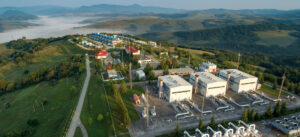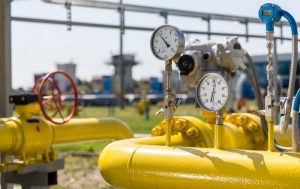
In 2024, Gas TSO of Ukraine LLC (GTSOU) plans to invest UAH 812.923 million in the development of the gas transmission system through depreciation charges.
This is stated in the resolution of the National Energy and Utilities Regulatory Commission (NEURC) on the approval of the GTSOU’s GTS Development Plan for 2024-2033, approved at a meeting on Wednesday.
“The main directions of the Gas Transmission System Development Plan for the first year (investment program for 2024) of the 10-year development plan are financing for: compressor stations – UAH 431,768 thousand (excluding VAT), gas distribution stations – UAH 60,226 thousand, gas pipelines – UAH 53,037 thousand,” the regulator said in its justification for the approved document.
In 2024, GTSOU also plans to spend UAH 85,996 thousand on the implementation and development of information technologies, UAH 63,200 thousand on the purchase of diagnostic and inspection devices and other devices, UAH 53,017 thousand on the modernization and purchase of vehicles, special machines and mechanisms, UAH 48,240 thousand on the purchase of production equipment, and UAH 17,439 thousand on industrial buildings and design and survey works.
The overall 10-year plan for the development of Ukraine’s GTS provides for a total funding of UAH 43.756 billion.

The European Bank for Reconstruction and Development (EBRD) and the Gas Transmission System Operator of Ukraine (GTSOU) have signed an agreement to formalise their cooperation on low-carbon hydrogen and to develop hydrogen supply chains.
“I am very pleased that the EBRD and GTSOU are cooperating to support each other’s activities regarding hydrogen. Ukraine relies heavily on fossil fuels across all sectors of its economy and hydrogen can represent a good alternative for decarbonisation, and reduce reliance on fossil fuels. Supporting the green transition of our economies is a key priority for the EBRD,” EBRD Managing Director for Green Economy and Climate Action Harry Boyd-Carpenter said.
CEO of GTSOU Sergiy Makogon said that the challenge of hydrogen therefore is to develop technology to scale up hydrogen use, to create the necessary conditions and infrastructure for its production, transportation and consumption.
“All this requires time, effort and cooperation by all stakeholders. We recognise the role of natural gas as one of the key energy sources and transition fuel on the path to carbon-free economy, which will remain significant for this transition period. As the operator of the gas transmission system, our task is now to prepare our infrastructure for the decarbonised energy markets of the future,” he said.
According to the report, the EBRD recently launched a study on the potential for developing different segments of the hydrogen supply chain across many of the economies where it invests, including Ukraine.

Ukraine may return to the idea of attracting European and American companies to manage its gas transmission system (GTS), Advisor to the Minister of Energy of Ukraine Lana Zerkal has said, expressing this opinion on the air of ICTV TV channel.
“This may be the same idea that was in 2019 for a joint consortium involving European and American companies to use the Ukrainian pipeline,” the ministry’s press service said, citing her.
According to Zerkal, this step will contribute to the lifting of Gazprom’s export monopoly on gas sales, since European consumers will have access to the GTS, deciding which gas supply route is more profitable for them.
“This is a geopolitical problem and it must be resolved at the geopolitical level using mechanisms inherent in geopolitics. Nord Stream 2 has become a stumbling block for the whole of Europe and for transatlantic relations. This is not only a question of Ukraine. This gas pipe has become an issue and a subject of international negotiations at the highest level,” Zerkal said.
She recalled that with the help of Ukraine’s partners in the European Union, it was already possible to amend the EU Third Gas Directive, which provides for its application to Nord Stream 2.
“It is very important that it be applied in full, because it will make it possible to balance market relations if Nord Stream 2 is nevertheless completed, certified and launched,” she said.
According to her, the EU has tools that can secure Ukraine from the use of Nord Stream 2 in full, leaving the Ukrainian GTS without transit.
“But for this we need to work with the European Commission, as well as with other countries that are also not interested in the launch of Nord Stream 2,” Zerkal said.

Transit shipments of Russian gas through Ukraine have increased as temperatures in Europe have normalized, data from Gazprom, the Gas Transmission System Operator of Ukraine and European gas transport operators show.
Over the weekend, temperatures in Europe dropped from unusually warm double digits back to average figures for this time of year.
Gazprom pumped 106 million cubic meters of gas through Ukraine on February 27 (nominations for Sunday and Monday are the same), while from February 17 to 26 it pumped an average of 79 mcm per day, with a low of 66.2 mcm on February 20.
The Russian gas giant had booked a far larger amount of transit for February: 123.2 mcm per day, including 109 mcm under its long-term transit contract and an additional 14.2 mcm based on monthly booking.